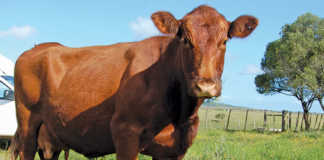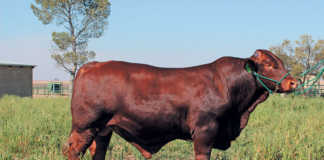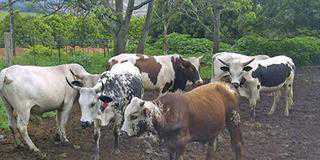Skin diseases in pigs can be serious or even fatal. This week, we look at the causes of lumps, changes in skin colour, thickening of the skin, and hair loss.
Lumps
Injection sites, fight injuries, the navel and the teeth can all become infected. Sometimes, these infections can produce abscesses, which are lumps filled with pus.
If the abscess is soft, cut it with a sharp sterile blade and clean with water and disinfectant. Do this over newspaper or on cement, then burn the newspaper and disinfect the area. Severe abscesses may require antibiotics.
Use a spray to keep flies away from the wound. Prevention involves good hygiene and quick treatment of wounds.
Mosquito and fly bites can also result in lumps on the skin. These are not harmful, but can be a problem when the pig is sold for slaughter: the marks may cause the carcass to be rejected. Use fly traps and spray.
Change in skin colour
A number of causes can be responsible:
- Diamond skin disease. This can be fatal if ignored. Look out for dark-red diamond-shaped patches on the skin. The disease can be treated with antibiotic injections and prevented by vaccination.
- Sunburn. Areas of skin with little hair, such as the back, behind the ears and the scrotum, become red and blister. The skin falls off, leaving bleeding sores. To treat, use antibiotic powder, dress the wound and make sure the pig stays in the shade.
- Ergot poisoning. This is caused by contaminated food and results in dead skin on the feet, tips of the ears, and tail. To prevent it, only give your pigs fresh feed.
- Fever. This is a symptom of many diseases, and results in red or purple skin. Pigs will often lie down when suffering from fever.
Skin thickening
This can be caused by several conditions, including mange – see last week’s Farmer’s Weekly. The problem can also result from a lack of zinc and occurs mainly in piglets. The belly is affected first. The symptoms include red circular areas on the skin, which become covered with scales.
Eventually the skin becomes dry, and crusts and cracks appear. Hair loss can also occur. To prevent, make sure your pigs get enough zinc in their diet. Commercial pig feed contains the correct amount of zinc.
Hair loss
As mentioned, this is caused by zinc deficiency. It can also occur with mange and other diseases. If in doubt about any of the above, see your vet immediately.
Source: Skin Conditions In Pigs, by Jenny Turton, produced by the Directorate Communication, department of agriculture, in co-operation with the ARC-Onderstepoort Veterinary Institute.













